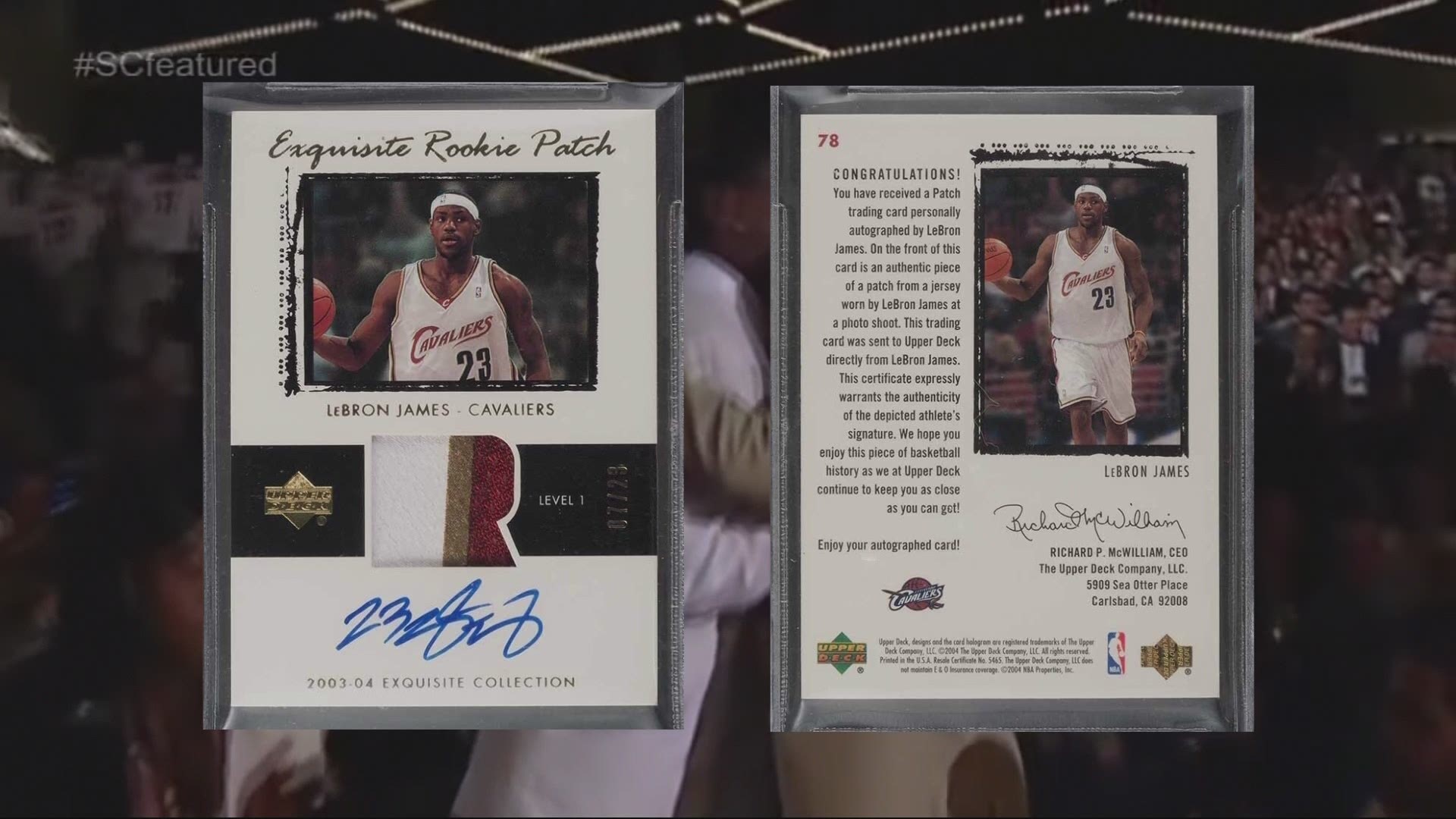PORTLAND, Ore. — The year was 2003. LeBron James was the No. 1 pick in the NBA draft and Upper Deck printed 23 LeBron James rookie patch autograph cards from its Exquisite Collection. Fast-forward to today when one of those cards just sold for a record $5.2 million.
“They're very hard to find and typically when you find them, they're in strong hands — people who don't need to sell or just don't want to sell,” said Jesse Craig, director of business development at PWCC Marketplace. The Tigard-based company is the largest auction seller in the world for trading cards and was behind the blockbuster LeBron James card sale.
“It ties the record for the most expensive trading card ever sold,” said Craig.
That tie is shared with a 1952 Topps Mickey Mantle baseball card, which also sold through PWCC in January. Both are extreme examples of a card market that, since the pandemic hit, has caught fire after years of heating up.
“It's absolutely stunning. I'm pretty sure I'm not sitting on any $5 million cards,” said Brad Chase, an avid card collector. Like so many card fans, he stepped back from the hobby in the early '90s when the baseball card industry overproduced inventory, diminishing card value. He recently dusted off his collection to look for hidden value amid the industry's comeback.
“To me, I got them initially because they were artwork,” said Chase. “Maybe in the back of my 8-year-old mind there was still some idea of, 'Hey, maybe when I'm in my 30s this is going to be valuable!' But really, it was because I love sports.”
Nate Liss hosts a podcast called Clear the Cash and is always looking to buy and flip trading cards. For him, it's business over sentiment, and always strategy.
“I kind of look at patterns and say okay, this player might be entering the Hall of Fame or this guy's had a string of great games," said Liss. "It's time to list that card and sell it at a peak value."
Experts suggest if you're looking to make money off a card, its condition is everything.
“Condition drives value,” said Craig. “The centering of the images on the card, the corners, the edges, the surface; those are all attributes that go to the overall grade of the card.”
Getting a card graded is a process in itself and it's not always cheap. Depending on the card's potential value, grading it can set you back $20 for low-end cards, on up to thousands of dollars to grade high-value prospects. Right now, Craig says the industry’s leading grading companies — PSA, Becket and SGC are experiencing such a huge influx of business that they’re prioritizing grading high-value cards due to backlog.
To help you decide if your card is worth grading, PWCC offers a market price research tool on their website. By typing in your card's information, it will bring up the history of all eBay sales.
“If there's a significant sale in there for that specific card, you might be onto something,” said Craig.
At the end of the day, money isn’t everything for some card collectors, like Chase.
“I'd rather hold on to some of these things,” he said.
And telling Mom that your card collection really wasn't junk?
Priceless.

